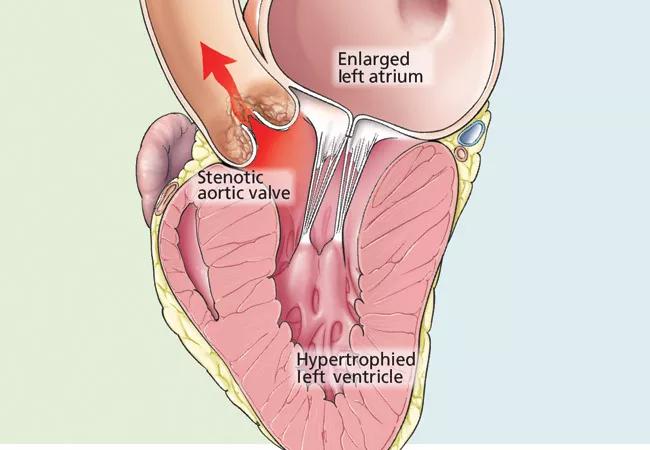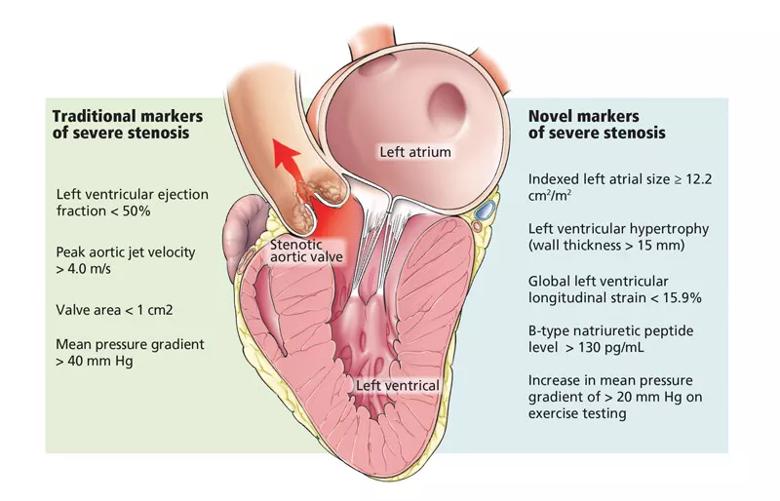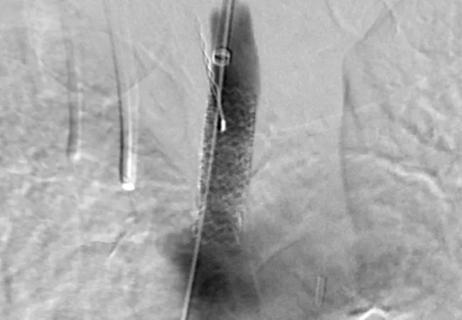Review calls for consideration of novel assessment variables

A patient presents with hemodynamically severe but asymptomatic aortic stenosis. Is watchful waiting in order, or do you advise aortic valve replacement?
Cleveland Clinic is a non-profit academic medical center. Advertising on our site helps support our mission. We do not endorse non-Cleveland Clinic products or services. Policy
It’s a fairly frequent dilemma in busy cardiology practices, and one that continues to generate debate. But the case for earlier intervention is growing, according to a recent review article in the Cleveland Clinic Journal of Medicine by Cleveland Clinic cardiovascular imaging specialists Dermot Phelan, MD, PhD, and Brian Griffin, MD, and a colleague from Ireland. The paper specifically calls attention to several novel assessment variables that may paint a clearer picture of which asymptomatic patients with severe aortic stenosis have the best risk-benefit profile for intervention.
Aortic valve replacement (AVR) — either surgical or transcatheter — remains the only treatment demonstrated to reduce mortality and morbidity in patients with aortic stenosis. Current guidelines from the American College of Cardiology/American Heart Association (ACC/AHA) are clear on the appropriateness of AVR in symptomatic patients, but management of asymptomatic cases is less definitive.
In the setting of asymptomatic severe aortic stenosis — defined as peak aortic jet velocity ≥ 4 m/s and mean pressure gradient ≥ 40 mm Hg — AVR is recommended by the ACC/AHA guidelines if any of the following apply:
The guidelines note that AVR is reasonable in cases of severe aortic stenosis in which either of the following apply:
Finally, the guidelines say that AVR may be considered in patients at high risk for rapid disease progression and at low surgical risk as well as in patients whose peak aortic jet velocity is rising by more than 0.3 m/s per year and who are at low surgical risk.
The new paper in Cleveland Clinic Journal of Medicine notes that assessment of asymptomatic aortic stenosis has relied on traditional echocardiographic measures of severity — namely, jet velocity, valve area, pressure gradient and LVEF.
While echo remains the best-established and most important initial tool in aortic stenosis assessment, its limitations figure into some of the gray areas in the ACC/AHA guidelines outlined above — as well as gray areas in similar European guidelines.
For instance, the paper cites the limitations of LVEF as a marker of left ventricular function, noting that it reflects change in ventricular cavity volume but not in the complex structure of the ventricle. “Several studies demonstrate that up to one-third of patients with severe aortic stenosis have considerable impairment of intrinsic myocardial systolic function despite a preserved ejection fraction,” notes Dr. Phelan.
In the context of this limitation, Dr. Phelan and his coauthors propose four additional variables for consideration in evaluating the effect of severe aortic stenosis on left ventricular function in the setting of a normal LVEF, none of which are included in current ACC/AHA guidelines:
After reviewing evidence in support of the incremental prognostic value of each of these variables in this setting, the authors envision a potential future revision to guidelines for asymptomatic aortic stenosis in which AVR may be considered if any of the following apply:

Figure. Assessment techniques for asymptomatic aortic stenosis are evolving. Supplementing the traditional echocardiographic markers of severity (jet velocity, valve area, pressure gradient and ejection fraction) are several novel measures that are not yet recommended in guidelines. Reprinted from Cleveland Clinic Journal of Medicine (2016;83:271-280).
The authors concede that further study is needed to determine whether earlier intervention in asymptomatic patients with adverse risk profiles based on these newer evaluation techniques leads to better long-term outcomes, but they believe such inquiries are clearly warranted.
“Intervention should especially be considered in asymptomatic patients with severe aortic stenosis in whom the measured surgical risk is low — and at surgical centers documented to have low mortality rates,” notes co-author Dr. Griffin.
For the complete review, see the full article (Cleve Clin J Med. 2016;83:271-280).

How our first century has impacted cardiovascular practice

Review offers comprehensive assessment of the landscape for wearables and more

Preserving trust in research requires vigilance and consensus around statistical nuances

Cardiac surgeon Patrick Vargo, MD, reflects on his first year as Cleveland Clinic staff

Improved risk prediction for patients is at the heart of Dr. Aaron Weiss’ research interests

Centralization would likely bring better outcomes, experts say, but may not be feasible

Dr. Daniel Burns on mentorship, robotic valve surgery, statistics and more

JACC review makes the case and outlines how to ensure oversight